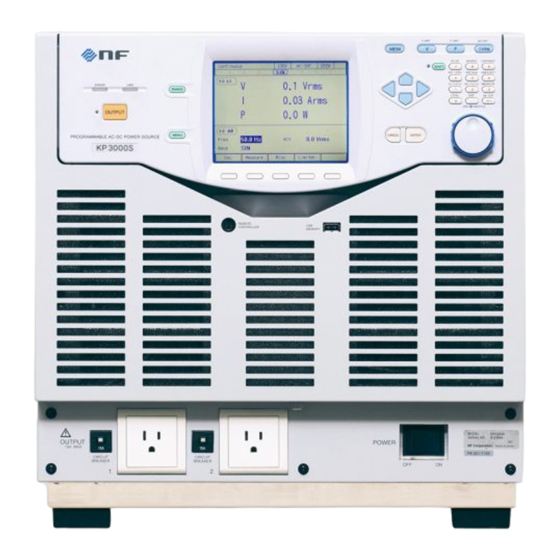
NF KP3000S Programmable Power Source Manuals
Manuals and User Guides for NF KP3000S Programmable Power Source. We have 1 NF KP3000S Programmable Power Source manual available for free PDF download: Instruction Manual
NF KP3000S Instruction Manual (290 pages)
PROGRAMMABLE AC/DC POWER SOURCE
Brand: NF
|
Category: AC Power Distribution
|
Size: 3 MB
Table of Contents
Advertisement
Advertisement
